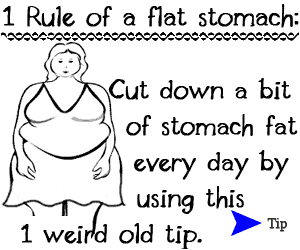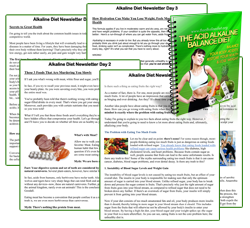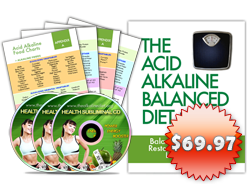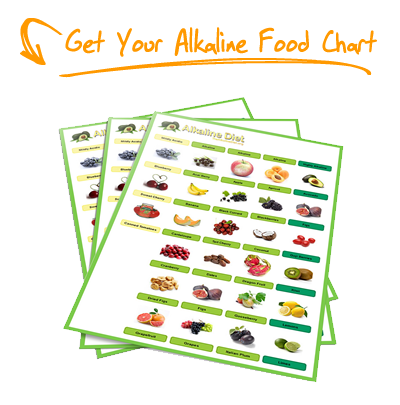7 Common Myths On Iron Nutrition Exposed
Posted on 12. May, 2010 by Staff Writer Candy Del Carmen in Alkaline Diet Tips, Blog
 Iron as the most abundant metals on earth are needed by our body to function well by transporting the hemoglobin in the blood. However, people have so many wrong beliefs when it comes to iron consumption. While it is true that iron deficiency is the worlds’ most common dietary disorder, it is also worth noting that iron overload is one of the problems most people are unaware of. For the benefits of our readers, we will expose the 7 myths on iron hoping that people can still change their view in some old folklore about iron and before it’s too late for them to realize that it is already lethal to their health.
Iron as the most abundant metals on earth are needed by our body to function well by transporting the hemoglobin in the blood. However, people have so many wrong beliefs when it comes to iron consumption. While it is true that iron deficiency is the worlds’ most common dietary disorder, it is also worth noting that iron overload is one of the problems most people are unaware of. For the benefits of our readers, we will expose the 7 myths on iron hoping that people can still change their view in some old folklore about iron and before it’s too late for them to realize that it is already lethal to their health.
Myth # 1 – Spinach can transform human as legendary Popeye
Unlike the legend of Popeye wherein his eminent power is coming from eating spinach, there is no truth that spinach will make you strong because of its rich iron content. The myth was originated during 1870 when Dr. E von Wolf claimed through his published work that spinach has 10 times more iron than any other green vegetables, whereas, the oxalic acid of spinach binds with iron and impairs its calcium absorption. The oxalic acid cannot be absorbed by the body. The other mistake of scientists is the wrong input of decimal point to nutritional iron value of spinach and it was too late to correct the mistake because Popeye already advertised this vegetable as his source of strength. Why is that so? Only 1/10th of iron content of what was originally claimed by the scientists is the correct amount of iron in spinach. Therefore, spinach has unusable iron, but nevertheless, a great source of some minerals and vitamins.
Myth # 2 – Meat manufacturer’s claim that meat with hem iron is healthy
For reader’s understanding, heme iron is found in meat, fish, and poultry in a chemical structure, while nonheme iron can be found in plant sources. This heme iron can be easily absorbed by our body and the claim of meat manufacturers that it is healthy for consumption is somehow true but there is a clear discrepancy on the claim and definitely a myth. Heme iron from meat, especially red meat may increase blood pressure and has adverse reaction to health, as published in British Medical Journal. Another disturbing truth is that when people have this hereditary hemochromatosis, a condition of iron overload, and getting excess iron from meat would affect some vital organs such as the heart, pituary gland, liver, pancreas, and joints. Furthermore, animal fats with high lipids when combined with heme iron can damage cells and generate free radical activity.
Myth # 3– Vegetarians have higher risk in getting iron deficiency
While it is factual that the nonheme iron found in plant sources makes it harder for human to absorb the iron than heme iron found in meat products, researches showed that iron deficiency cannot be linked to vegetarian people. With the right choice of vegetables like beans and green leafy vegetables, vegetarians can get as much iron as meat lovers do. The significant result has been published in the American Journal of Clinical Nutrition in 1999 showing no difference at all the amount of iron a vegetarian can get from his healthy and well chosen diet and a meat lover getting his iron from meat.
Myth 4 # – Eat more bran with meals
Bran is the byproduct of hard outer layer of grains and some people add bran to their diet because of its high fiber content that aids in constipation and best source of protein. However, the misconceptions that including bran with meals are healthier where in fact people who have iron deficiency must not include highly fortified foods with bran because it can actually reduce the iron absorption. To explain further, there are foods considered as iron absorption blockers including bran, and others such as coffee, tea, whole grains and some high fiber intake. This means that to help our body to absorb more iron, we can include vitamin C sources or other heme iron food sources from animal, with moderation, and people have to take note of the word “moderation” to balance the food we eat and not to suffer from any iron deficiency.
Myth # 5 -Using Iron Cooking Pots Can Aid Anemia
Since ancient Chinese era, iron cooking utensils are used in some parts of European and Asian countries because of its relatively low cost compared to aluminum cookware. It has been a controversy how these iron cooking pots can aid anemia based on some researches conducted that it can boost iron intake, but further studies are needed to be conducted to make this a conclusive findings. People who are advocates of using this utensil may also know the disadvantage of how iron pots react to food we consume and may cause iron toxicity that can be harmful to health of people who have hemochromatosis or the tendency of the body to absorb too much iron than ordinary people do.
Myth # 6 – Iron supplements are needed by sports enthusiasts
Taking iron supplements by athletes cannot be connected for having sports anemia. The truth about having anemia is the fact that the cause is due to the liquid parts of the blood known as plasma produced by sports enthusiast in heavy training. It is not the low hemoglobin, but rather, the plasma that is the main cause of sports anemia. . People are thinking that to increase iron intake is the best solution to make them recover from fatigue because of the wrong thinking that the low hemoglobin is responsible behind their lagging performance. Yes, it is true that iron is the most essential component of hemoglobin and plays the most important role in transferring carbon dioxide and oxygen in the blood, yet, iron deficiency is not only the main cause of low hemoglobin or anemia.
Myth # 7 – Everyone needs more iron, therefore taking iron supplement is necessary
While others are thinking that iron deficiency is bad for their health, it is also a fact and proven through many researches that high iron intake and body stores of iron are linked to high risk of developing colon cancer. There are two primary causes of iron overload: first, as the result of genetic disorder of excessive iron absorption or having hemochromatosis; second, from blood transfusion or iron poisoning. Why iron overload is toxic? For the reason that organs and tissues can be damaged if iron is chronically exceeded and that’s the time when people get affected like having diseases in the liver, hepatitis C and B infections, and many various diseases. The most susceptible in iron toxicity are children who consume and share their mother’s iron supplement and it serves as leading cause of death if not treated well.
Less known about the fact that we are just exposing ourselves from iron toxicity for overdosing of intake which we think may be best for our health. Debunking the myths about iron has cleared our old beliefs that were transferred from generation to generation. It is more than enough that we get adequate iron increment from the foods we consume, and no need for added supplement that would only lead to a worst scenario of getting diseases.
Reference:
Common Iron Myths and Misconceptions, http://nutrition.getfit.com/tips/iron/myths/
Finch (1995) “The Shocking Truth about Iron”, http://www.ironoverload.org/hippocrates.html
The Heme Iron Problem, http://www.ecologos.org/iron.htm
Iron and the Endurance Athlete, http://home.trainingpeaks.com/articles/nutrition/iron-and-the-endurance-athlete.aspx
Heme Iron from Red Meat may Increase Blood Pressure, http://www.medinewsdirect.com/?p=550
Cookware, http://missvickie.com/resources/cookware/1castiron.html
Iron Toxicity, http://www.arltma.com/IronToxDoc.htm





Recent Comments